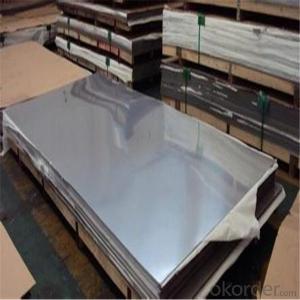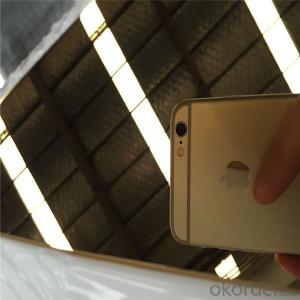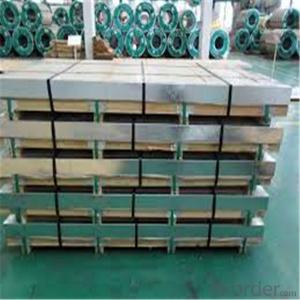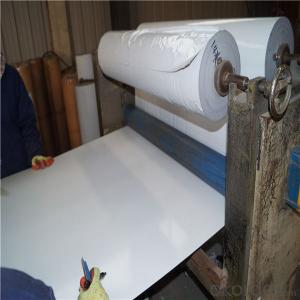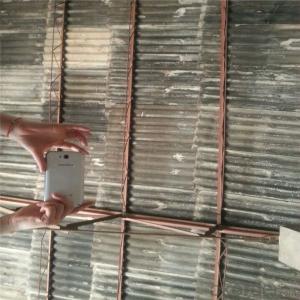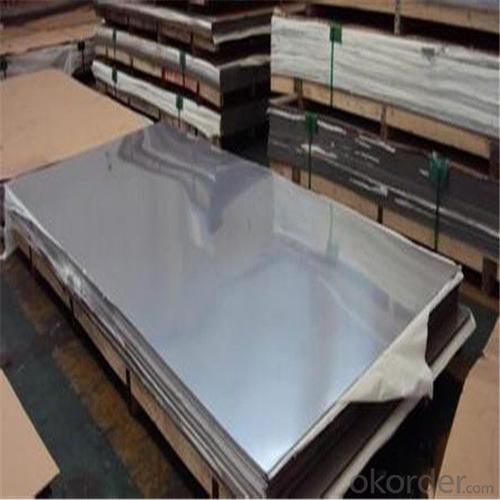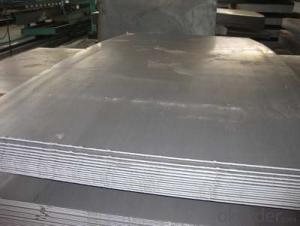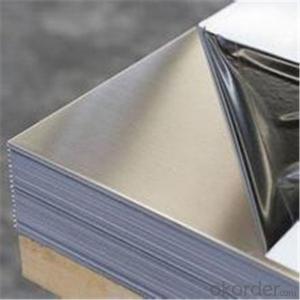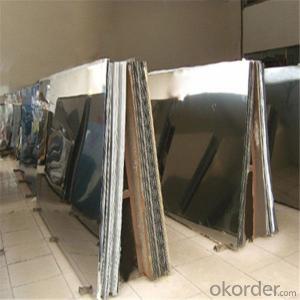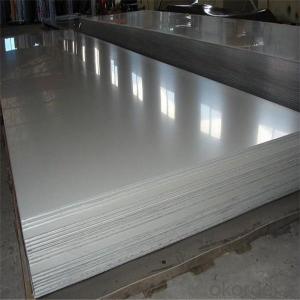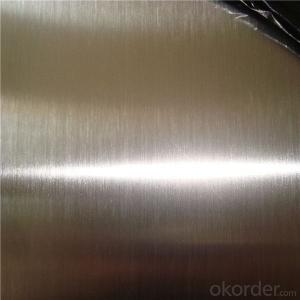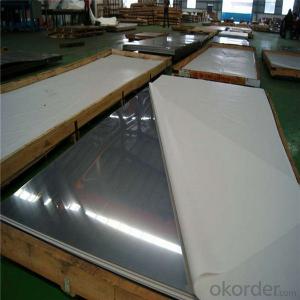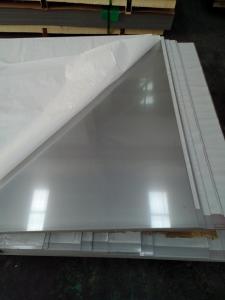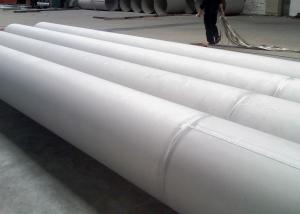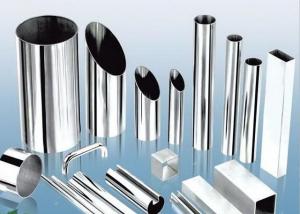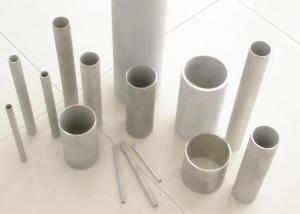Duplex 2205 BA surface stainless steel plate
- Loading Port:
- Shanghai
- Payment Terms:
- TT OR LC
- Min Order Qty:
- 2 m.t.
- Supply Capability:
- 20000 m.t./month
OKorder Service Pledge
OKorder Financial Service
You Might Also Like
Specification
Duplex 2205 BA surface stainless steel plate
We are a professional manufacturer of stainless steel sheet. According to ASTM, JIS and AISI,GB, standards, Jaway steel enhances effectiveness and of quality control from selecting the raw materials, cutting, slitting, shearing, surface treatment, packing, exporting of the existing products.
stainless steel sheets
Grade: 200 series& 300 series& 400 series
1) material;430 420 304 316 321 316L 347H 317L 310S 904L and etc
2) finish:2B,BA,HL,Brush,NO.1-NO.4 and so on
3) thick;0.1--120mm
4) wide;1000--2000mm
5) long;2000--8000mm
6)Standard: JIS, AISI, ASTM, GB, DIN, etc.
7) Craft: Hot rolled/cold drawn/forging
8) Packaging: Standard sea-worthy packaging, with wooden box or wooden pallet
9) Delivery time:15-30days
9)Application: construction field, ships building industry, petroleum & chemical industries, war and electricity industries, food processing and medical industry, boiler heat exchanger, machinery and hardware fields.
These are the normal items, for the special requirements,we can also meet.
Surface finish | Characteristics and application |
NO.2B | The surface brightness and flatness of no2B is better than no2D. then through a special surface treatment to improve its mechanical properties,No2B could nearly satisfy comprehensive uses. |
NO.3 | Polished with abrasive belt of git#100-#200, have better brightness with discontinuous coarse stria, used as inner and external ornaments for building, electrical appliances and kitchen utensils etc. |
NO.4 | Polished with abrasive belt of grit #150-#180,have better brightness with discontinuous coarse stria,but thinner than No3, are used as bathtub buildings inner and external ornaments electrical appliances kitchen utensils and food processing equipment etc. |
HL | Polished with abrasive belt of grit #150-#320 on the NO.4 finish and has continuous streaks, mainly used as buildings ornaments elevators,door of building, frontal plate etc. |
BA | Cold rolled, bright annealed and skin-passed, the product have excellent brightness and good reflexivity like mirror,kitchen apparatus,ornament etc. |
8K | The product have excellent brightness and prefer reflexivity can to be the mirror. |
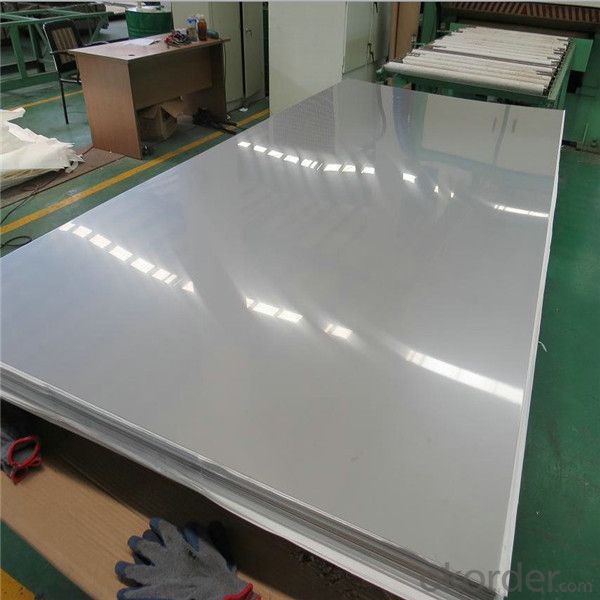
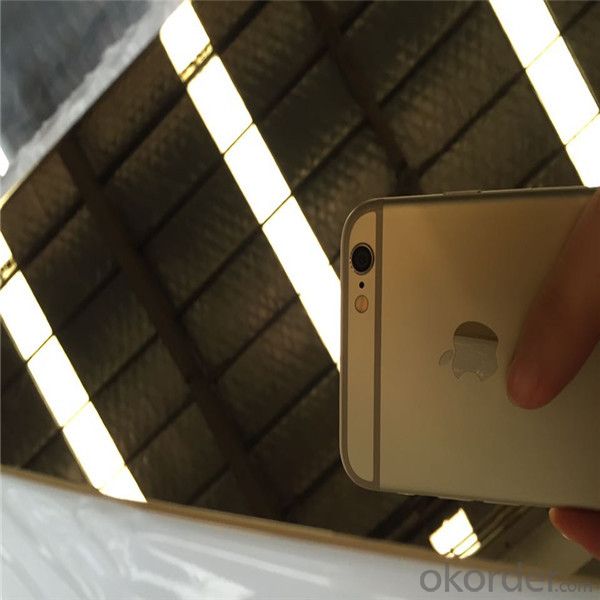
Our Advantages
• All products are made of high-quality imported raw materials.
• Our products are certified by ISO9001:2008 authentication quality systems.
• we are nominated as the AAA enterprise by Jiangsu government.
• Quick Response to Your Enquiry.
- Q: How do you determine the thickness of stainless steel sheets required for a specific application?
- To ascertain the necessary thickness of stainless steel sheets for a particular application, one must take into account various factors. 1. Load-bearing capacity: The initial step involves determining the maximum load that the stainless steel sheets will need to bear. This can be calculated by considering the weight of the objects or materials that will be placed on the sheets. It is essential to factor in any potential dynamic loads or impact forces that may be exerted. 2. Deflection limits: Deflection pertains to the degree of bending or sagging that occurs when a load is applied to the stainless steel sheets. The limits of deflection will depend on the specific application and the desired performance of the sheets. In general, minimizing deflection is vital for structural integrity and ensuring that the stainless steel sheets can withstand the intended load without excessive bending. 3. Material properties: Stainless steel sheets come in different grades, each possessing its own mechanical properties. The tensile strength, yield strength, and hardness of the stainless steel should be taken into consideration to ensure it can withstand the required load and any potential environmental conditions, such as corrosion or extreme temperatures. 4. Safety factors: It is crucial to incorporate appropriate safety factors to provide a margin of safety for the stainless steel sheets. Safety factors account for uncertainties in load calculations, material properties, and other variables. The safety factor may vary depending on the desired level of confidence, but it is typically recommended to apply a safety factor of at least 1.5 to 2. 5. Industry standards and regulations: Depending on the specific application, there may be industry standards or regulations that specify the minimum thickness requirements for stainless steel sheets. It is important to consult these standards and ensure compliance to guarantee that the sheets meet all safety and performance requirements. By considering these factors and conducting engineering calculations, one can determine the appropriate thickness of stainless steel sheets needed for a specific application. It is always advisable to consult with an experienced engineer or a reputable stainless steel supplier to ensure accurate calculations and to address any specific requirements or unique considerations pertaining to the application.
- Q: What are the common sizes of stainless steel sheets?
- The common sizes of stainless steel sheets vary, but some common dimensions include 4 feet by 8 feet, 5 feet by 10 feet, and 4 feet by 12 feet.
- Q: What are the different types of stainless steel sheet coatings available?
- There are several different types of stainless steel sheet coatings available, including electroplated coatings, powder coatings, and organic coatings. Electroplated coatings involve the deposition of a thin layer of metal onto the stainless steel surface, providing enhanced corrosion resistance. Powder coatings involve the application of a dry powder that is then heated and cured to form a protective layer. Organic coatings, such as paints or lacquers, are also commonly used to provide corrosion resistance and improve aesthetic appeal.
- Q: Are stainless steel sheets suitable for elevator control panels?
- Yes, stainless steel sheets are suitable for elevator control panels. Stainless steel is a durable and resistant material that can withstand various environmental conditions, including frequent use and exposure to moisture, heat, and chemicals. Elevator control panels often require a material that is easy to clean, resistant to scratches and dents, and aesthetically pleasing. Stainless steel meets all these criteria, making it an ideal choice for elevator control panels. Additionally, stainless steel has a sleek and modern appearance, which can enhance the overall design of the elevator interior.
- Q: How do I select the appropriate thickness for stainless steel sheets?
- When selecting the appropriate thickness for stainless steel sheets, there are a few factors to consider. First and foremost, you should determine the specific application or purpose for which the stainless steel sheets will be used. If you are looking for stainless steel sheets for decorative purposes, such as in interior design or architectural projects, a thinner gauge may be suitable. Thinner gauges, typically ranging from 26 to 30 gauge, are more flexible and easier to shape, making them ideal for intricate designs or curved surfaces. On the other hand, if you require stainless steel sheets for structural or industrial purposes, a thicker gauge would be more appropriate. Thicker gauges, generally ranging from 18 to 20 gauge, offer increased strength and durability, making them suitable for heavy-duty applications, such as construction, automotive, or manufacturing. Additionally, it is crucial to consider the intended use of the stainless steel sheets. If they will be subjected to high levels of wear and tear, exposure to harsh environments, or heavy loads, it is advisable to opt for a thicker gauge to ensure the sheets can withstand these conditions without compromising their integrity. Lastly, budgetary constraints may also play a role in determining the appropriate thickness. Thicker gauges tend to be more expensive due to the higher amount of material required. Therefore, it is important to strike a balance between the required strength and the available budget. In summary, when selecting the appropriate thickness for stainless steel sheets, consider the intended application, the required strength and durability, and any budget constraints. By taking these factors into account, you can choose the most suitable thickness that will meet your specific needs.
- Q: Can stainless steel sheets be cut or shaped easily?
- Yes, stainless steel sheets can be cut or shaped easily. Stainless steel is known for its excellent machinability and workability, making it relatively easy to cut, shape, and form into desired shapes or sizes with the right tools and techniques.
- Q: What is the typical thickness range for stainless steel sheets?
- The typical thickness range for stainless steel sheets varies depending on the specific application and requirements. However, stainless steel sheets are commonly available in thicknesses ranging from 0.4mm to 6mm. Thinner sheets, such as those in the 0.4mm to 1mm range, are often used for decorative purposes or in applications that require flexibility. Thicker sheets, on the other hand, are commonly used in structural or industrial applications where strength and durability are crucial. It is important to note that these thickness ranges are not exhaustive, and customized stainless steel sheets can be manufactured to meet specific project requirements.
- Q: What are the different types of surface finishes for stainless steel sheets?
- There are several different types of surface finishes for stainless steel sheets, including brushed, mirror, embossed, bead blasted, and satin.
- Q: What is the abrasion resistance of stainless steel sheets?
- The abrasion resistance of stainless steel sheets is generally high due to their strong and durable nature. They are able to withstand mechanical wear and tear, making them suitable for applications where frequent contact or friction occurs.
- Q: What are the different types of stainless steel sheet edge treatments available?
- Various edge treatments are available for stainless steel sheets, each offering distinct advantages and aesthetic options. 1. The mill edge treatment is the most commonly used, where the stainless steel sheet is produced with an unfinished, straight edge. It is cost-effective and suitable for applications that prioritize functionality over appearance. 2. The slit edge treatment involves cutting the stainless steel sheet to the desired width, resulting in a smooth edge. Slit edge sheets are commonly used in industries like food processing and pharmaceuticals, where a clean, burr-free finish is necessary. 3. The deburred edge treatment focuses on removing any burrs or sharp edges from the stainless steel sheet, leaving a smooth and safe edge. It is often employed in architectural or automotive applications where safety is a concern. 4. The rolled edge treatment involves bending the stainless steel sheet to create a rounded edge. This treatment is popular in applications where safety and aesthetics are important, such as kitchen appliances or decorative pieces. 5. The beveled edge treatment refers to cutting the stainless steel sheet at an angle, creating a diagonal edge. Beveled edges are commonly used in architectural applications to achieve a smooth transition between different materials or enhance the overall design. These examples illustrate the range of stainless steel sheet edge treatments available. The choice of treatment depends on specific application requirements, including functionality, safety, and aesthetics.
Send your message to us
Duplex 2205 BA surface stainless steel plate
- Loading Port:
- Shanghai
- Payment Terms:
- TT OR LC
- Min Order Qty:
- 2 m.t.
- Supply Capability:
- 20000 m.t./month
OKorder Service Pledge
OKorder Financial Service
Similar products
Hot products
Hot Searches
Related keywords
